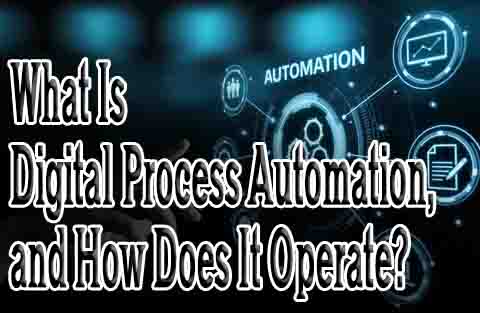Table of Contents
What is Digital Process Automation?
Digital process automation is the practice of automating tasks in the field. It uses software and hardware to automate tasks that were previously done manually. These tasks may include data entry, document storage, communications and workflow management.
Software is used to create rules that cause automated processes to run, while the hardware is used for the actual tasks themselves. These include data entry, document storage, communications and workflow management.
Digital automation can reduce companies’ costs by eliminating manual workflows or speeding up certain processes’ completion. For example, suppose you have an automated system for receiving customer orders (such as Amazon). In that case, it will take less time for someone to input their information into this system than if they had manually filled out paperwork with each order before shipping them off!
The goal of digital automation is to make it easier for employees at an organization’s headquarters to manage their team members’ workflows back at their offices or onsite facilities by using remote control devices they carry with them when they travel between locations (e.g., smartphones).
The advantage of digital automation is that it provides much greater efficiency and accuracy than humans are capable of.
Batch Workflow
The first type is a batch workflow. This involves running a series of steps in sequence on a single machine or computer without any human intervention. For example, if you need to print off 100 copies of an invoice, then you could use an automatic printer (such as an inkjet printer) that scans each copy as it comes out onto paper to produce 100 identical documents at once.
Distributed Workflow
A distributed workflow is similar, but instead of running all the tasks on one machine, it may be distributed across several machines so that they work together as part of one larger production line. This takes more time than just running everything on one site would do due to communication delays between them being necessary for certain operations such as data transmission, back up from other parts within networks connected through routers, etc.
Recurrent workflows are what most people think of as digital automation. They are based around using a series of activities to perform a job, such as an email sequence or scheduling task execution via the web interface. Recurring tasks can be created manually or generated automatically from other systems in your organization.
This is done by setting up rules within a system that cause an automated process to run when certain criteria are met, such as starting a send task once a certain number of emails have been received. Rules may also trigger other actions within your application or system; for example, if someone asks for information about a product or service and enters their email address for them.
Conclusion:
Digital process automation is important for businesses that need to handle complex workflows more efficiently. It can be used for many tasks, including data entry, document storage, communications and workflow management.

